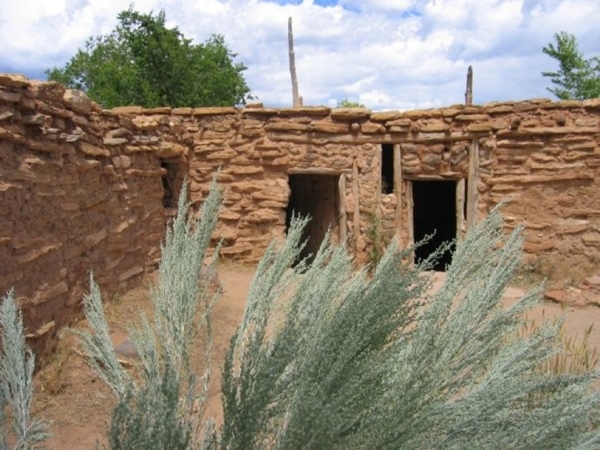Utah state park preserves Anasazi ruins, artifacts
Anasazi State Park Museum near the farming community of Boulder in southern Utah preserves an important archaeological site where excavation has revealed nearly 100 structures and thousands of artifacts from prehistoric Native Americans.
Visitors exploring the 6-acre park learn about the early native people by following trails past ruins, wandering through a six-room replica dwelling and touring museum exhibits. The former inhabitants left behind a wealth of tools, pottery and other implements when they moved on about 800 years ago.
The day-use park lies along state Route 12, a byway recognized as one of the most scenic in the West. It runs 124 miles through spectacular canyon country and high alpine forests between Bryce Canyon and Capitol Reef national parks. To reach the area, follow Interstate 15 north from Las Vegas into Utah. Any of several connecting highways will take you east to U.S. Highway 89, including state Route 9 through Zion National Park or Route 20 through Panguitch. Access state Route 12 from U.S. 89 about 7 miles south of Panguitch and head east. Anasazi State Park Museum is about 85 miles from the U.S. 89 junction.
Route 12 runs through several small towns settled by Mormon pioneers in the latter half of the 1800s. Several visitor centers along the way provide details on regional attractions, history, geology and plants and animals. Route 12 also accesses two other Utah state parks with campgrounds.
The people who lived long ago near Boulder were part of an ancient culture. It spread across the Colorado Plateau from the Four Corners area. The people established villages across northern Arizona, into southern Utah and as far west as Southern Nevada. Long known as the Anasazi, and more recently as Ancestral Puebloans, they disappeared from the area about 800 years ago. Their withdrawal at about the same time across their range is referred to as the "Anasazi Collapse." It remains unexplained, although various theories include warfare, starvation, disease, natural disasters and religion.
The site near Boulder offered access to water, arable land, elevated building areas and plenty of building materials. It was settled about A.D. 1100 and was occupied for about a century. It was home to more than 200 villagers housed in pueblo-style dwellings.
The villagers farmed irrigated plots of corn, squash, beans and cotton. They domesticated turkeys and raised them for meat, feathers and eggs. They augmented homegrown foods with hunting small animals, birds, deer, elk, bighorn sheep and bison. Gathering edibles from the desert and mountains around them were seasonal activities that took them away from their villages. Perhaps these would have been occasions for gatherings and festivities.
These enterprising people lived well enough to produce surplus food, implements and pottery for trading. Some Anasazis mined salt or turquoise to trade. They were part of a far-flung trading network among cultures that covered hundreds of miles. Artifacts indicate trading brought items from Mesoamerica and the Pacific Coast. Situated on the border of the Ancestral Puebloan incursion into Utah, the Boulder villagers were also in contact with the Fremont culture that prevailed throughout most of Utah and the Great Basin in Nevada.
Life was not easy on the semi-arid Colorado Plateau. Farming is hard work and successful harvests depend on favorable temperatures, wind, precipitation and good luck. To store excess corn and other foods, the villagers built granaries that can still be seen tucked into ledges in the cliff walls along Route 12 as it approaches Boulder. It required vigilance to keep pests out of their food stores.
Just staying warm through winter meant constantly hunting for wood, tending fires and living in close quarters in generally smoky habitations. The people then were much smaller than the much better-nourished residents of the area today. Their shortened life spans also indicated hardships, food shortages, injuries and health problems that made them old by age 40.
— Margo Bartlett Pesek's Trip of the Week column appears on Sundays.






















